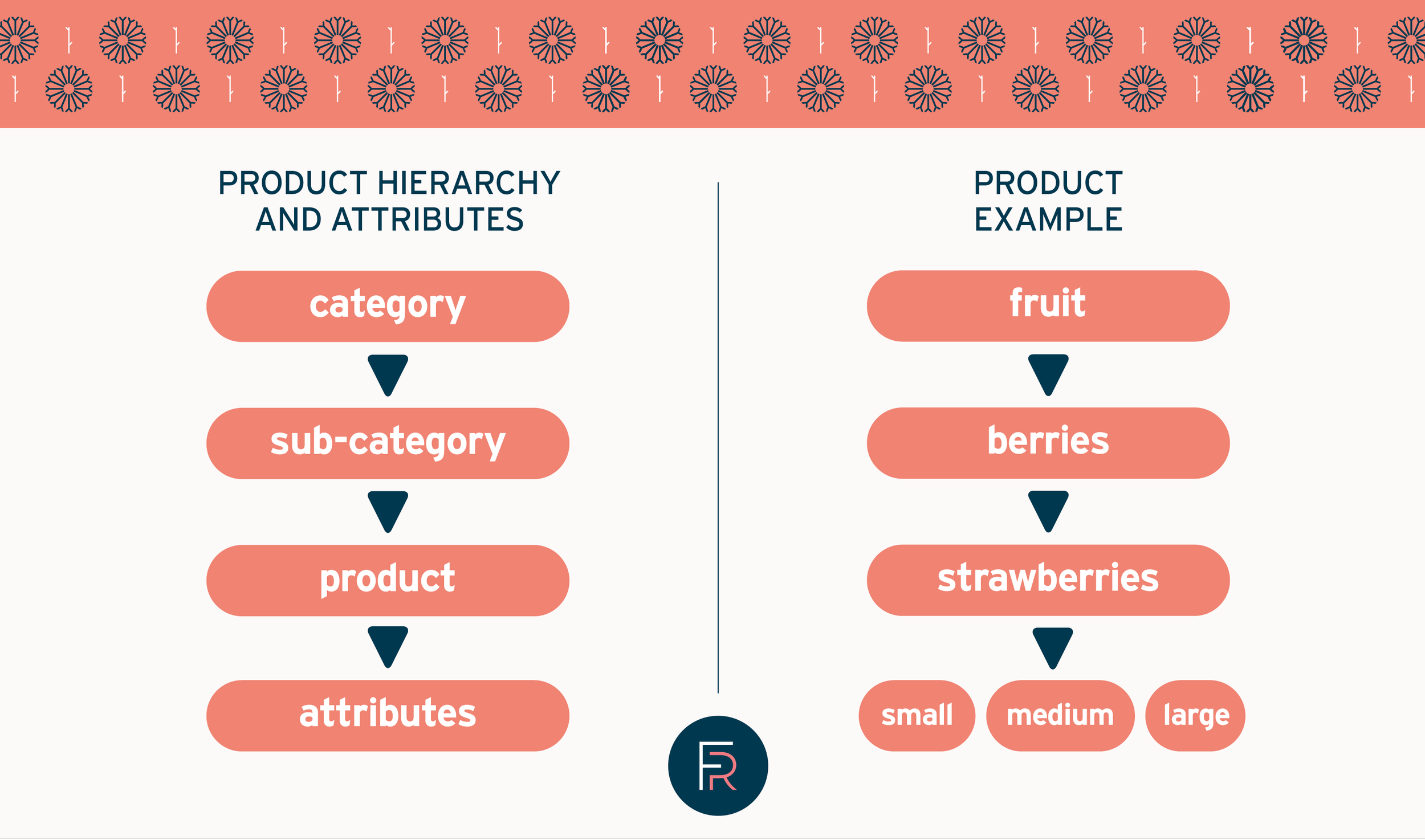Product hierarchies: best practice and top tips for organising your products
Being organised makes sense in any business, and retail businesses are no different. Creating a hierarchy of your products, and understanding how to use that hierarchy alongside your product categories and attributes, will help you and your customers navigate your range.
Let’s put it another way. Love them or hate them, we can learn a lot from supermarkets. Arranged in aisles (or in categories if you shop online), they’re logical and they help you find what you want quickly. They try to make your shop easy.
Imagine instead that the products were put on random shelves. As a customer, you wouldn’t know where anything was. As an employee, you wouldn’t know what stock you needed to replenish. Nobody’s happy. And that’s not good.
The key is in the categories (and their friends, sub-categories and products)
You can think of your products in the same way as supermarkets think about theirs. Let’s say you have the categories of fruit, dairy, and bakery.
Let’s be healthy and focus on fruit (although bakery sounds tempting).
Within the fruit CATEGORY, you have different SUB-CATEGORIES of fruit, like berries and apples. And if we pick the berries sub-category, within that we’ll find PRODUCTS, such as strawberries, blueberries, and raspberries.
Categories, sub-categories and products. That, in a nutshell, is your Product Hierarchy.
Next, let’s introduce attributes
Think about those strawberries for a moment (yum). Have you ever noticed that you can buy them in different ways? They might come in small, medium or large punnets. ‘Small’, ‘medium’ and ‘large’ are attributes.
Attributes help you analyse your sales data, spot trends, and quickly identify growth opportunities.
For example, those small punnets of strawberries?
Because you attributed them, you can see that they’re selling really, really well. You decide to buy more and to trial an extra-small size. You satisfy sales demand, you grow your profits and your customers are happy. Sounds good!
You can use the Flourish Sales Tracker to create your own sales hierarchy
The tracker allows you to categorise and attribute your products, creating your very own, super-useful Product Hierarchy. This is an example:
Doing this means your sales data will be quick to enter and, with the analysis pack which is included, you’ll automatically have all the information you need at your fingertips.
Ready to put your hierarchy into place? Buy the sales tracker here →




